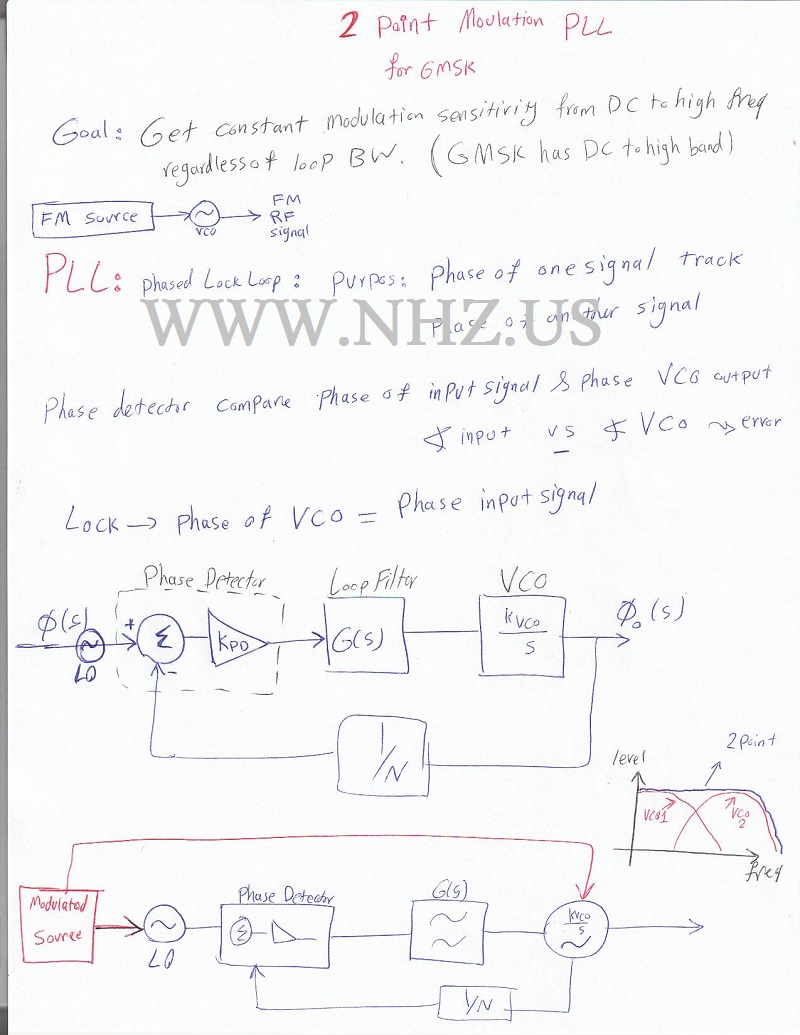AbstractThis article provides an in-depth examination of Two-Point Modulation Phase-Locked Loop (PLL) technology, a crucial advancement in frequency synthesis and modulation techniques. Two-point modulation PLL addresses limitations in traditional PLL designs, offering improved performance in terms of modulation bandwidth and phase noise. The article explores the fundamental principles, architecture, advantages, and applications of two-point modulation PLL systems. It also discusses the challenges in implementation and future prospects of this technology in the context of modern wireless communication systems. 1. IntroductionPhase-Locked Loops (PLLs) have been a cornerstone of frequency synthesis in communication systems for decades. However, as wireless technologies have advanced, demanding higher data rates and more efficient spectrum utilization, traditional PLL designs have shown limitations, particularly in terms of modulation bandwidth and phase noise performance. Two-point modulation PLL emerges as a solution to these challenges, offering a novel approach to frequency synthesis and modulation. 2. Fundamentals of Phase-Locked Loops2.1 PLL Components:
2.2 PLL Operation:
2.3 Limitations of Traditional PLLs:
3. Two-Point Modulation PLL: Concept and Architecture3.1 Concept:Two-point modulation PLL introduces a second modulation point in addition to the traditional VCO input modulation. This dual modulation approach allows for wider bandwidth modulation while maintaining the noise-suppression benefits of the PLL. 3.2 Architecture:
3.3 Modulation Points:
4. Working Principle of Two-Point Modulation PLL4.1 Signal Flow:
4.2 Frequency Response:
4.3 Modulation Bandwidth Extension:
5. Advantages of Two-Point Modulation PLL5.1 Enhanced Modulation Bandwidth:
5.2 Improved Phase Noise Performance:
5.3 Faster Settling Time:
5.4 Spectral Efficiency:
6. Implementation Challenges6.1 Gain Matching:
6.2 Timing Alignment:
6.3 Nonlinearity Compensation:
6.4 Design Complexity:
7. Applications of Two-Point Modulation PLL7.1 Wireless Communications:
7.2 Frequency Hopping Systems:
7.3 Test and Measurement Equipment:
7.4 Satellite Communications:
8. Future Prospects and Research Directions8.1 Integration with Advanced Modulation Schemes:
8.2 MIMO Systems:
8.3 All-Digital PLLs:
8.4 Machine Learning Integration:
9. ConclusionTwo-point modulation PLL represents a significant advancement in frequency synthesis and modulation technology. By addressing the limitations of traditional PLL designs, it enables wider modulation bandwidths, improved phase noise performance, and faster settling times. These advantages make two-point modulation PLL an essential component in modern wireless communication systems, supporting higher data rates and more efficient spectrum utilization. While implementation challenges such as gain matching and timing alignment exist, ongoing research and development continue to refine the technology. As wireless communications evolve towards 5G, 6G, and beyond, two-point modulation PLL is poised to play a crucial role in meeting the increasing demands for spectral efficiency and performance. The future of two-point modulation PLL looks promising, with potential integrations into advanced modulation schemes, MIMO systems, and all-digital implementations. As the technology matures, it is likely to find even broader applications across various fields of electronics and communications. 10. Q&A SectionQ1: What is the main advantage of two-point modulation PLL over traditional PLL designs?A1: The main advantage of two-point modulation PLL is its ability to achieve wider modulation bandwidth while maintaining good phase noise performance. This is accomplished by introducing a second modulation point, allowing high-frequency modulation components to bypass the loop filter, thus overcoming the bandwidth limitations of traditional PLLs. Q2: How does two-point modulation PLL improve settling time?A2: Two-point modulation PLL improves settling time by allowing faster frequency changes. The direct path to the VCO enables rapid frequency adjustments, while the loop maintains long-term stability. This results in quicker lock acquisition and improved performance in frequency hopping applications. Q3: What are the main challenges in implementing a two-point modulation PLL?A3: The main challenges include:
Q4: In which applications is two-point modulation PLL particularly beneficial?A4: Two-point modulation PLL is particularly beneficial in:
Q5: How does two-point modulation PLL contribute to spectral efficiency?A5: Two-point modulation PLL contributes to spectral efficiency by:
 |